This remineralizing toothpaste tastes great & uses bentonite clay with over 60 trace minerals. It’s the best natural toothpaste we’ve ever used! Also, try our DIY Whitening Tooth Powder for naturally white teeth!
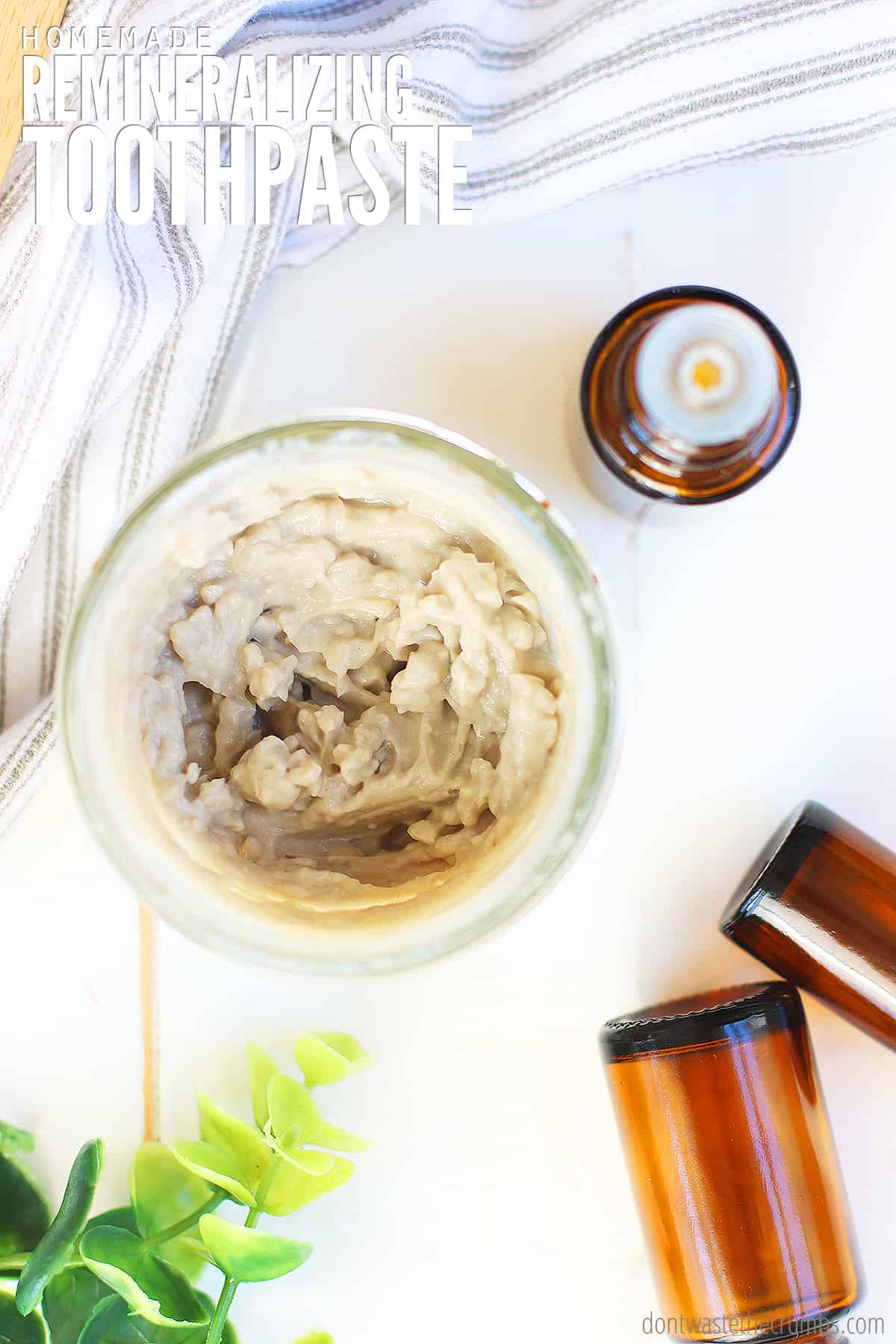
A few years ago, I did something that my friends and family thought was a little kooky. I made homemade toothpaste.
Unbeknownst to me at the time, it was remineralizing toothpaste too.
You see, it’s made with clay and done wonders for our dental health, despite the fact it does NOT contain fluoride.
It also doesn’t make bubbles in your mouth and tastes very different from typical toothpaste.
We attribute bentonite clay to healing Mr. Crumbs’ gum disease. I also believe that the reason my dentist said my mouth looked good (despite not having a cleaning for over two years) was because of the clay.
Do you remember what the hygienist told me while I was sitting in the chair?
It was priceless, and it was all because of the clay.
All this time, Mr. Crumbs and I have been brushing with peppermint while the kids have been brushing with lemon. But I know that some people aren’t big fans of either peppermint or lemon, and they cringe at the thought of orange tic tacs (the third original flavor).
So I’ve added another flavor of homemade toothpaste to the bathroom: CINNAMON!
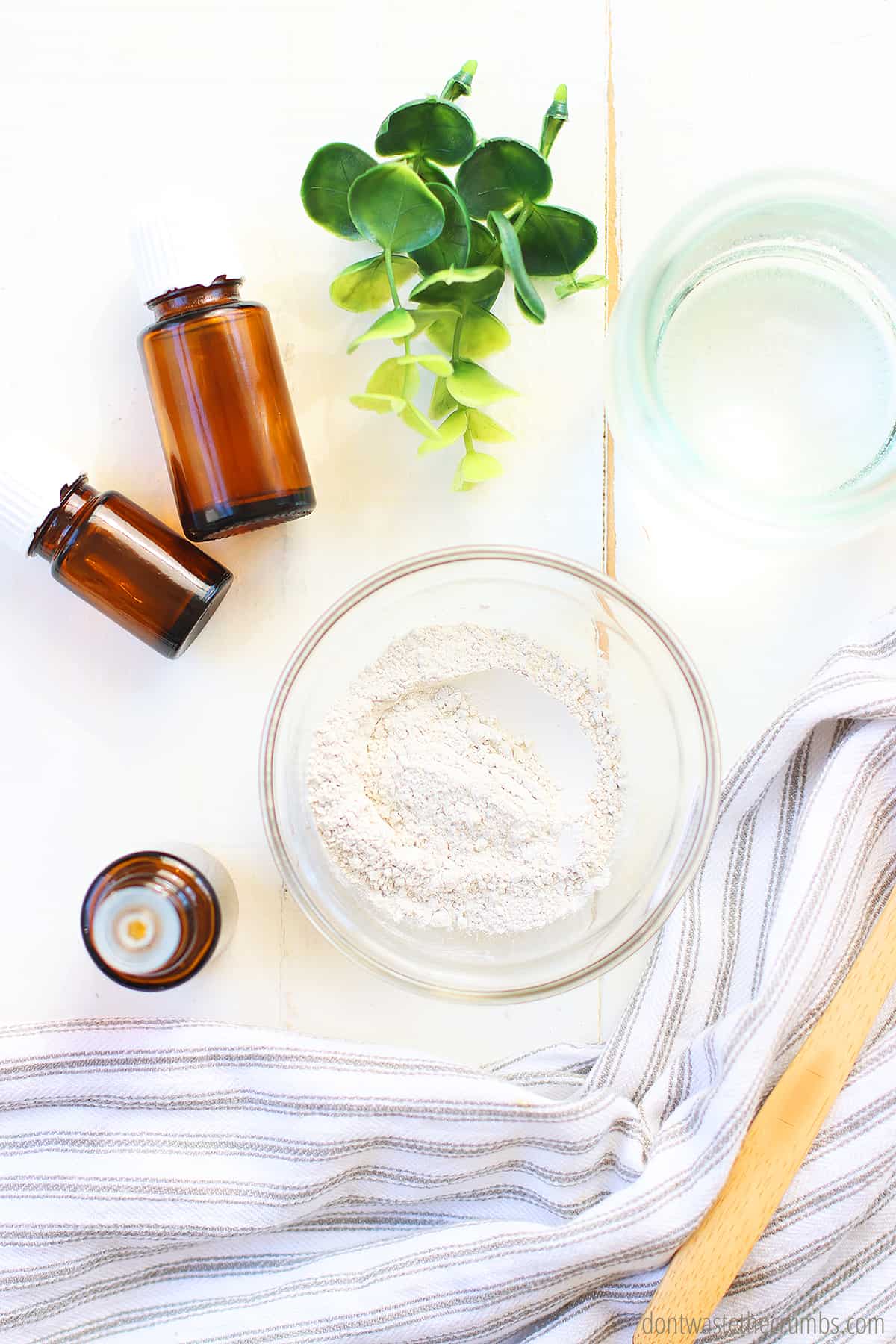
But get this – the awesomeness of this new homemade toothpaste goes beyond the flavor alone (although it does taste really good!). The American Dental Association (ADA) states that the mouth is a window into the health of the body. Cinnamon Bark Vitality essential oil can support healthy digestion and help maintain a healthy immune system, while Clove Vitality essential oil promotes a healthy immune response!
Homemade toothpaste that tastes great AND supports your overall wellness? WIN!
Have you heard the buzz words of “remineralizing toothpaste?”
My homemade toothpaste recipes are clay-based because bentonite clay helps the body to get rid of toxins. Essentially, the clay is like a magnet, drawing harmful toxins and metals to itself, allowing your body to get rid of toxins easily.
Not to be overlooked though is the fact that bentonite clay also contains 60 trace minerals that our body needs, but cannot create on its own.
So many people are looking for toothpaste to help replace lost minerals, thinking they need to add calcium or some other important mineral. What they often don’t realize is that bentonite clay already has them!
So by coupling essential oils with bentonite clay, you’re creating remineralizing toothpaste. It’s a powerhouse of natural medicine that can help keep your mouth healthy and happy.
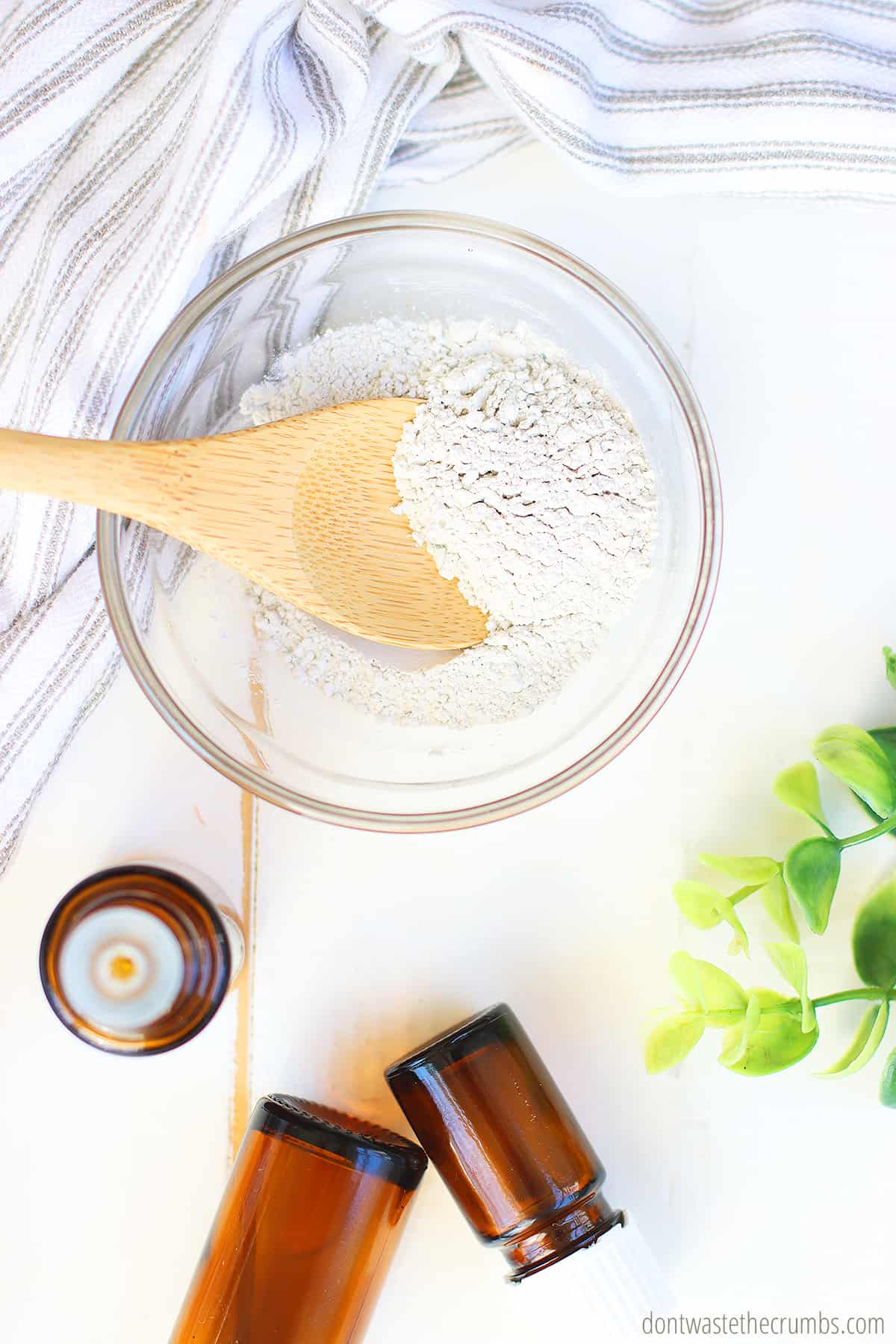
Remineralizing Toothpaste Supplies
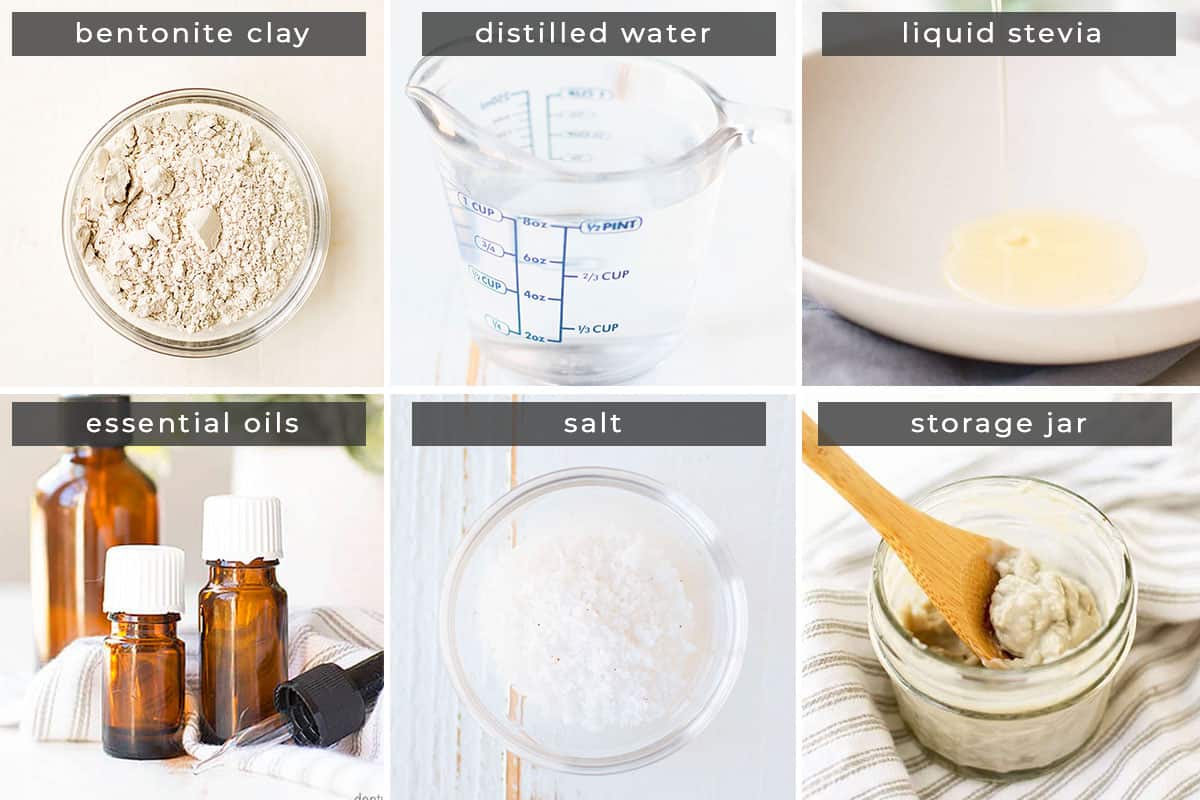
- 2 Tbsp bentonite clay
- 3-4 Tbsp distilled water, or water that has been boiled and cooled
- 10 drops liquid stevia OR xylitol (optional, to taste)
- 4 drops Cinnamon Bark Vitality essential oil (or this cinnamon essential oil)
- 2 drops Clove Vitality essential oil (optional, but recommended)
- teeny pinch of real salt
- glass bowl
- container for storage (we use these 4 oz jars, but these reusable squeeze tubes work well too)
Note: Regarding essential oils, I’ve heard great things about Plant Therapy on Amazon.
How To Make Remineralizing Toothpaste Step By Step
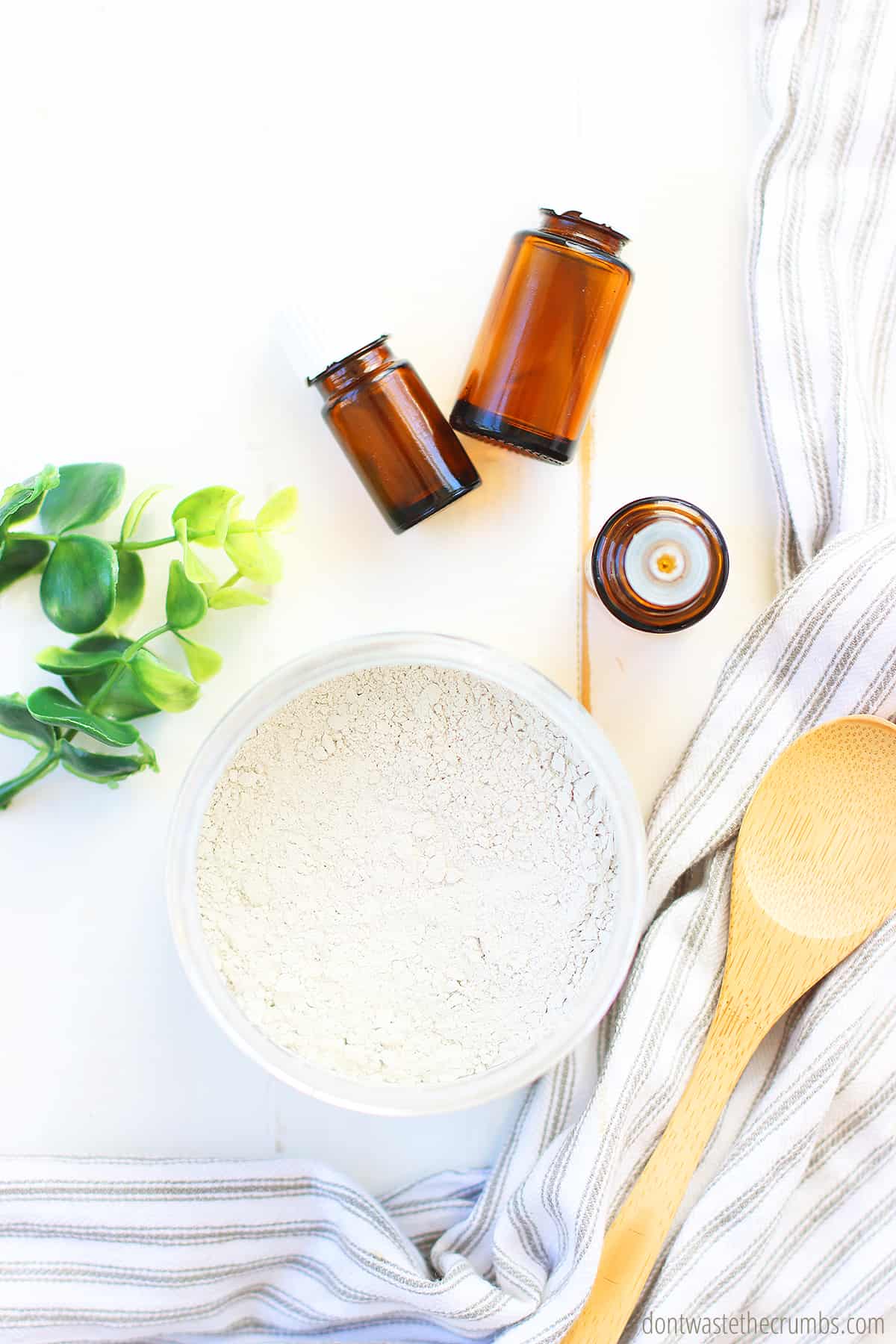
Step 1. Measure bentonite clay into a glass bowl. Carefully measure essential oils, sweetener, and salt into the clay.
Step 2. Add 3 Tbsp of water to the clay and using a plastic or wooden spoon or spatula, stir to combine the ingredients until very smooth, about 5 minutes.
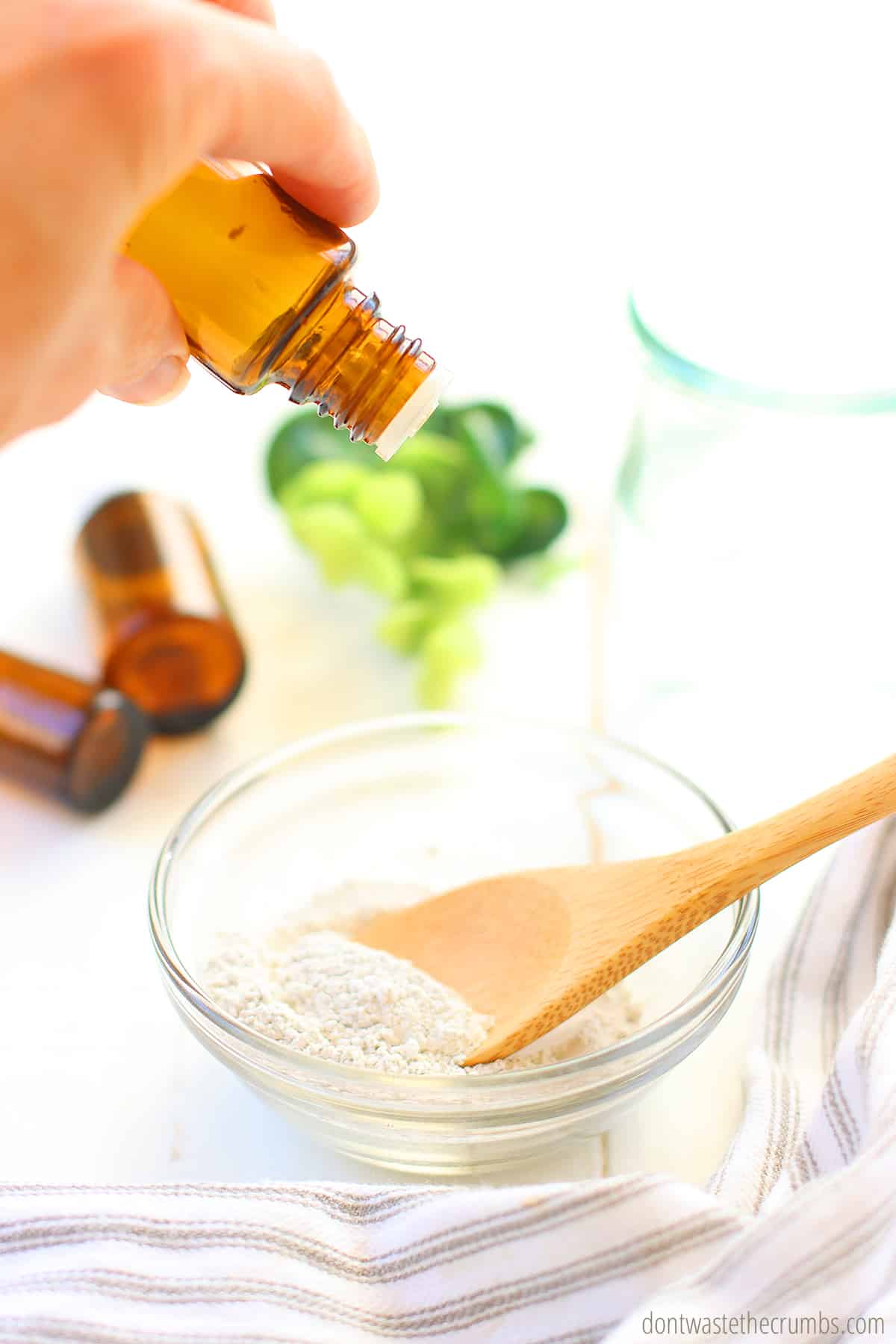
Step 3. I’ve found that mashing the ingredients together against the side of the bowl works best to fully incorporate the ingredients. Add the remaining tablespoon of water if you prefer your toothpaste to be on the thinner side.
Step 4. Store in a glass container with a lid and you’re done!
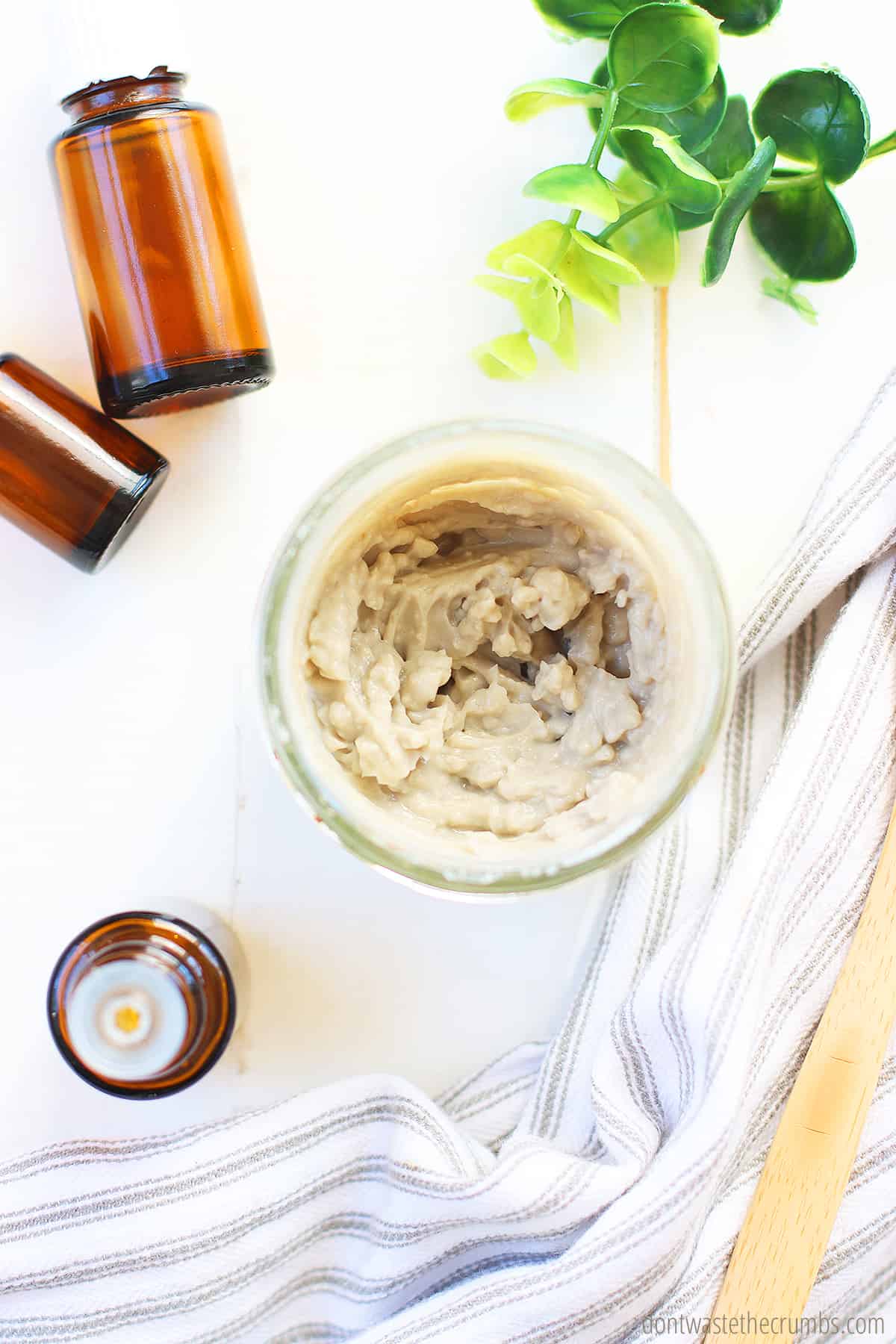
Tips for Storing and Using Remineralizing Toothpaste
- When I make remineralizing toothpaste, I make a double batch and fill up two 4 oz glass jars. One jar is for the kids and one jar is for the parents. We simply dip our toothbrushes into the jars, call it done and we’ve never had any issues.
- However, I know not everyone is comfortable with sharing a jar who someone else might have dipped their toothbrush in.
- For those families, consider storing your toothpaste in individual mini plastic pots. They’re just big enough for one person to last a couple of weeks.
- You can also store your remineralizing toothpaste in silicone squeeze tubes, and you’d use it like you would a traditional tube of toothpaste.
- If you prefer glass over silicone and plastic, I suggest a smaller 2 oz. glass jar. You can fill up each jar with one batch of toothpaste, and one jar would last one person about one month.
Note: If you’ve purchased Redmond Clay before and noticed the warning labels on the side, check out this information. I get asked all the time about the Proposition 65 and lead warnings and want to pass along their reasons why the labels are there.
FAQs
A great starting point is to make this simple remineralizing toothpaste recipe! You’ll love how fresh your teeth feel.
We use bentonite clay (which has over 60 trace minerals) and essential oils for this homemade toothpaste recipe to help remineralize our teeth naturally.
Not Ready to Make Remineralizing Toothpaste Yet?
If you’re not comfortable making your own toothpaste, or you’re “not there yet” in your natural living journey, I totally understand, but I don’t want you to ignore your dental health!
Consider switching from typical toothpaste and try Earthpaste instead. It’s what originally inspired me to make our own toothpaste, and it contains the same ingredients as this remineralizing toothpaste recipe does!
More DIY Natural Living Recipes
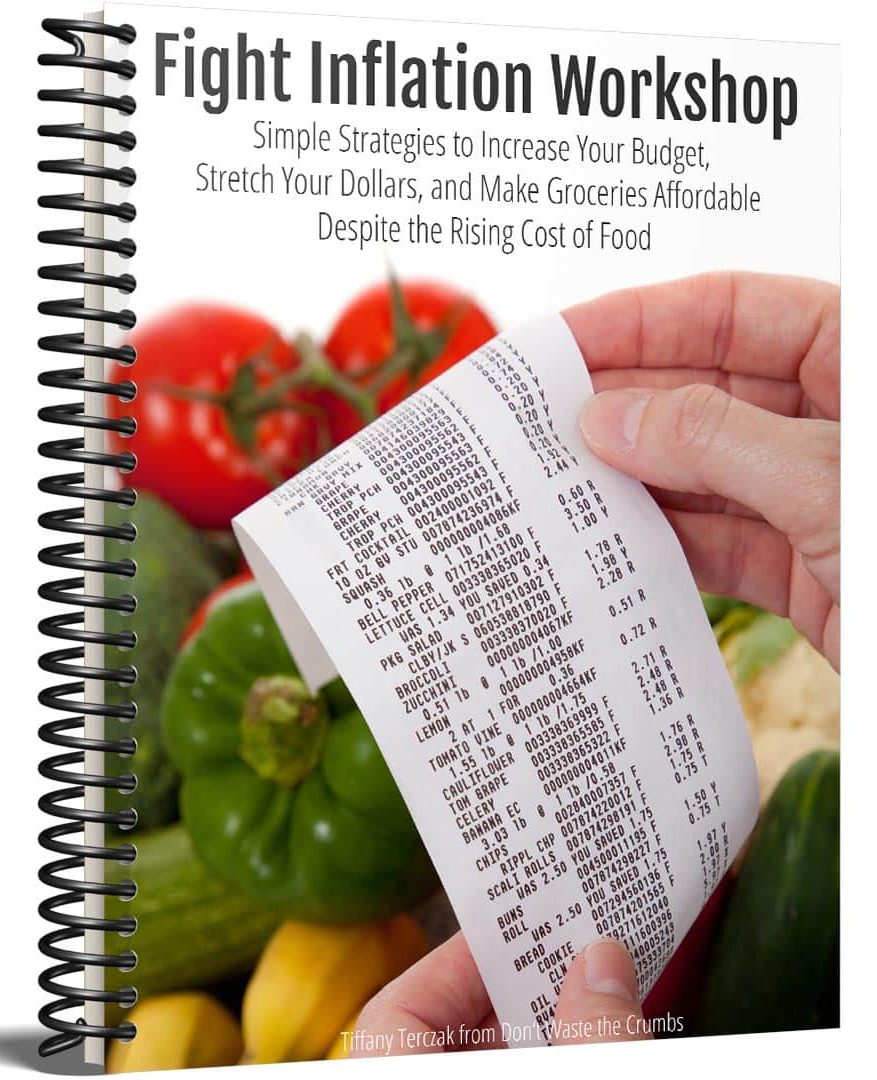

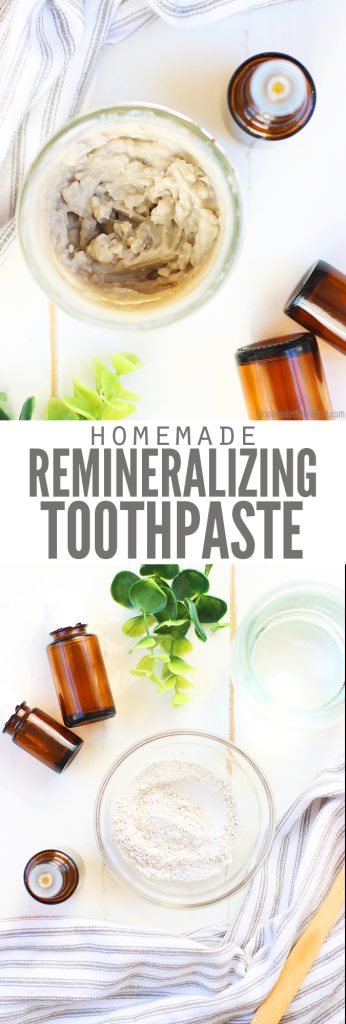


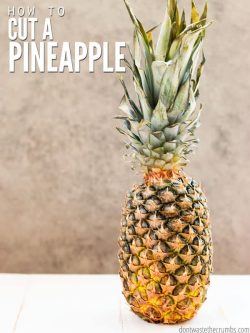


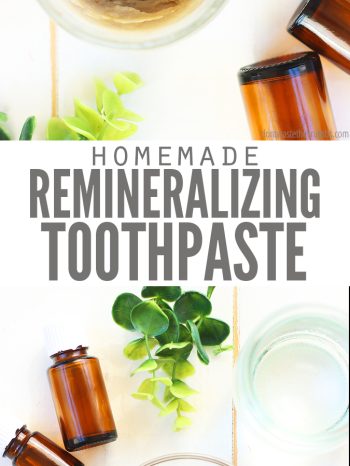
i have liquid bentonite (for detox) can i use it for toothpaste?
Hello Norma Stafa,
Liquid bentonite clay is rehydrated clay with a consistency to toothpaste (it’s just been rehydrated for you, instead of you adding water to the powder). You can definitely use liquid bentonite as a starting place for toothpaste. Hope this helps!
Hi,
We made it and love it! Does it supposed to foam like regular toothpaste?
Hi Veronica! This toothpaste will not foam like regular toothpaste. It has simpler ingredients that will benefit your teeth greatly!
Do you leave this mixture on the teeth for a while, then rinse? Or, do you just brush, spit, then rinse?
Hello Michele,
For this remineralizing toothpaste, you brush, spit, and rinse like any other toothpaste. 🙂
I just made the toothpaste. Yours is white while mine is gray. I used Fossil Power Bentonite clay sodium montmorillonite. Is this ok or do I need to buy a different
You should be fine, Darwin. Mine is more grey in real life. Picture editing makes it look a bit lighter. 🙂
This is one of the best articles I have seen in a long time! Thank you for sharing these helpful tips!
Hello Tiffany! We have fallen in love with this toothpaste! We love the taste, the texture and the way it makes our teeth feel. I do have a question. Is there any problem spitting this down the drain? Will it clog the drain over time? Thanks so much.
Hi Tamalita! I don’t believe there will be any issues. The clay would have to dry out in large quantities in order to clog, but since you use a small amount to brush, you aren’t spitting out clumps and there’s water consistently running down the pipe, I think you’re fine!
Hi Tiffany, I recently tried this cinnamon toothpaste. I had made a peppermint version before. I decided to add orange to it, and it tastes like… Christmas! It is so funny, but it makes me happy every time I brush. I’m really liking this combo.
I’m so glad you like it Nicole!
Hi, I tried making this today and it was just a runny mixture. Is 2 tbsp of clay and 3 tbsp of water correct?
Hi Kelly! The ratios are correct. Clay absorbs liquid pretty quickly, so it will be runny at first and then thicken up. If it’s not thick after a few hours, add more clay 1/2 tsp at a time, stirring very well after each addition. This is a very flexible and forgiving DIY!
Do you know if it would be as efficient to just add the Bentonite clay to my Dr. Bronner’s toothpaste? Also, I lack the essential oils, are they just boosters and for flavor or do they play some sort of activation factor in the paste?
Hi Kristi! You’ll be using significantly less clay if you add it, rather than making your own toothpaste, so I probably wouldn’t go that route personally. The oils do have beneficial properties including supporting a healthy mouth, so they’re not just for flavor. 🙂